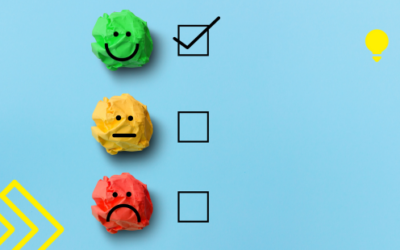25 March 2024

Introduction: From Ideas to Impact – The Innovation Journey for Businesses
Innovation is critical for business success. It refers to the process of bringing new, original, and impactful ideas to life. By continually innovating, businesses can create and capture new value, stay relevant in the market, and gain a competitive advantage.
However, innovation doesn’t just happen overnight. It requires intentional processes, structures, and strategies to turn ideas into reality. The innovation journey consists of various stages that allow businesses to navigate from conceptual ideas to real-world impact and results.
In this article, we will explore the key steps of the innovation process that businesses must undertake to successfully transform ideas into meaningful outcomes. Understanding these stages provides a strategic framework to funnel creativity into concrete innovations that solve problems and create value for the organization and customers.
With focus and persistence through each phase, companies can unlock their full innovation potential. The journey requires assembling the right people, resources, and partnerships to incubate new offerings while also managing risks. By breaking down the process into distinct parts, businesses can develop more clarity and intentionality around executing innovation successfully. Let’s dive into the phases every business must navigate to progress from imagination to implementation.
Innovation Journey Step 1: Ideation
The starting point of any innovation journey is ideation – the process of generating and developing new ideas. Effective ideation sets the foundation for building innovative products, services or processes. At this stage, the goal is to come up with as many ideas as possible without judging them. Quantity over quality is key.
Brainstorming and Generating New Ideas
- Hold structured brainstorming sessions to spark creative thinking. Encourage wild and unconventional ideas. The goal is to break conventional thinking patterns.
- Leverage creative techniques like mind mapping, free association, role playing, etc. to come up with ideas. Engage a diverse set of participants to bring different perspectives.
- Look for external inspiration – trends, user needs, technology advances, etc. Immerse yourself in your customer’s world. Observe how they interact with existing products and services.
- Build on existing ideas to create incremental innovations. Analyze competitor offerings to identify potential gaps or opportunities.
Creative Techniques for Idea Generation
- SCAMPER – Substitute, Combine, Adapt, Modify, Put to other uses, Eliminate, Reverse
- Attribute listing – Listing characteristics and specifications of a potential product or service.
- Six thinking hats – Looking at a problem from different perspectives.
- TRIZ – Inventive problem solving methodology focused on contradiction elimination.
Idea Evaluation and Prioritization
- Define clear criteria for assessing ideas – customer value, feasibility, differentiation, cost, team skills, etc.
- Leverage techniques like weighted scoring, SWOT analysis, idea pitch, etc. to evaluate ideas.
- Identify the most promising ideas to pursue further. Look for concepts that are unique, beneficial for users, and realistic to implement.
- Prioritize by effort, impact and confidence. Focus on quick wins to build momentum before taking on riskier innovations.
Innovation Journey Step 2: Research & Analysis
Once you have generated and narrowed down your initial ideas, the next stage is conducting thorough research and analysis. This helps assess the feasibility and viability of each idea before investing significant time and resources into developing them.
- Market research is critical at this phase. Look at the competitive landscape, size of the potential market, customer demand and pain points, and how your idea differs from alternatives. Surveys, focus groups, and user interviews can provide valuable insights directly from your target audience.
- Analyze the costs and resources required to develop, produce and launch the product or service. This includes things like:
- Operational costs like materials, manufacturing, marketing etc.
- Labor costs – will you need additional staff or can existing teams take it on?
- Technical requirements – do you need new software, hardware, IT infrastructure?
- Consider potential partnerships and distribution channels. Are there other businesses you could collaborate with? How will you get the product or service to market and to customers?
- Look at risks and obstacles. What challenges might you face in terms of regulations, technology limitations, competitor responses etc.? How can these be mitigated?
- Determine the timeline for development and launch. Break down steps and milestones and give realistic time estimates.
Conducting diligent research and analysis at this stage helps forecast the feasibility, costs, and resources required to turn ideas into reality. It allows you to anticipate challenges and make informed go/no-go decisions before investing heavily in product development.
Innovation Journey Step 3: Prototype Development
The prototype development phase involves taking an idea from concept to tangible product. This is where you build prototypes and minimum viable products (MVPs) to test the idea with real users.
Rapid prototyping techniques like 3D printing, software prototyping, and Wizard of Oz testing allow you to quickly build prototypes to gather user feedback. Prototypes can range from low-fidelity wireframes to high-fidelity products with limited features. The goal is to build just enough of the product to enable user testing.
Focus groups are an important part of prototype testing. Selecting potential target users and getting their hands-on feedback reveals insights that guide product refinement. Observing how focus group participants interact with the prototype can uncover usability issues and opportunities for improvement.
Effective prototype development requires building multiple versions based on iterative testing. Using agile development methods allows for rapid cycles of prototyping, testing, learning, and refining the product. This process reduces risk by validating concepts before sinking significant development resources. Testing prototypes with users also builds interest in the product by making potential customers part of the innovation process.
Innovation Journey Step 4: Testing & Validation
After developing a prototype, the next crucial step is testing it with real users to validate product-market fit. Companies should conduct beta testing by giving prototypes to a small group of target users to try out.
Beta testing serves several important purposes:
- It allows companies to observe how users interact with the product. Where do they struggle? What do they find unintuitive? This reveals opportunities to refine the user experience design.
- It provides extremely valuable user feedback. Open-ended survey questions and interviews allow users to share their honest thoughts on what they like, dislike, and want to see improved.
- Usage metrics offer hard data on how often certain features are used. This indicates what’s resonating with users versus what’s falling flat.
- Testing with a sample of real users validates product-market fit before committing to full development. It’s a proof point that a sizable market actually wants the product.
The feedback from beta testing should directly inform the final stages of product development. Every piece of user input is an opportunity to make the product more intuitive, useful, and delightful. This greatly increases the chances of success at launch.
Frequent beta testing is crucial for creating an exceptional product that solves real needs for users. Companies shouldn’t treat it as an afterthought or box to check. It’s one of the most enlightening parts of the innovation journey.
Innovation Journey Step 5: Business Case Development
Once an idea has been validated through testing and research, the next step is to build a strong business case to secure internal funding and alignment. This involves several key steps:
- Conducting cost-benefit analysis. Analyze both the potential costs and expected benefits of launching the new product or service. Consider implementation costs, ongoing operational expenses, required resources, projected ROI, profit margins, etc. Quantify the market opportunity and potential revenue.
- Building the business case. Compile all the data and analysis into a compelling business case document that clearly outlines the rationale and economic justification for moving forward. Include evidence of customer demand, competitive benchmarking, staffing requirements, financial projections, key milestones, and a roadmap of next steps.
- Securing internal buy-in and funding. Present the business case to key stakeholders and decision makers. Demonstrate there is a viable market opportunity worth pursuing. Highlight the expected ROI and positive impacts on business growth. Address any concerns transparently. Obtain official sign-off and secure the necessary budget, staffing, and resources to proceed with development.
Gaining alignment on the strategic opportunity and value proposition of the new offering is critical before investing significant resources into full product development. A data-driven business case helps justify the expenditure and mobilize the organization around a common vision of success and impact.
Innovation Journey Step 6: Product Development
Once an idea has passed the business case stage, it’s time to develop the actual product or service. This stage requires tight collaboration across functions like engineering, design, marketing, operations, and more. An agile development process is critical for managing complexity and adapting to learnings during the build.
Key aspects of product development include:
- Cross-functional collaboration: Innovation cannot happen in a silo. Bring together experts from all relevant areas like design, engineering, operations, legal, etc. Diversity of thought and expertise prevents tunnel vision.
- Agile development processes: Build and test in rapid sprints rather than long, sequential phases. This accelerates learnings and flexibility to pivot.
- Continuous iteration and improvement: Release alpha/beta versions to get real user feedback early and often. Use this to refine and enhance the product before full launch.
- Scaling production: Innovate on manufacturing, supply chain, and operations to support wide release.
- Monitoring KPIs: Track key metrics on quality, adoption, retention, engagement, and more. Analyze data to optimize the product and marketing.
The product development stage turns an idea into reality. Strong cross-functional collaboration, agile processes, continuous improvement, and scaling production are critical to deliver a compelling product that delights users. This sets the stage for a successful full launch.
Innovation Journey Step 7: Launch Preparation
Once the product or service has been fully developed based on testing and validation, the focus shifts to launch preparation. This involves building up to fully launching the innovation through a variety of strategies:
- Market testing and trial launches – Before going to full launch, many companies will do small beta launches or market tests. This involves releasing the product or service to a small segment of the target market to validate aspects like pricing, positioning, demand generation, and operational capacity. Key learnings can be gathered to optimize the innovation before full launch.
- Building awareness and demand – Companies invest heavily in marketing and sales to build awareness, interest and demand in the marketplace. This is done through advertising, promotions, influencer campaigns, events and more. Strong demand needs to be generated so sales can hit the ground running at launch.
- Scaling up operations – All business operations are scaled up in preparation for launch. This includes manufacturing, distribution, sales, customer service, technical support and other key operations. Staffing and training are ramped up. Systems and processes are tested at scale to ensure smooth operations at launch. Supply chain logistics are secured.
Getting launch preparation right is crucial for ensuring a successful introduction of the innovation to the marketplace. Missteps during launch can detrimentally impact market reception and sales performance out of the gate.
Innovation Journey Step 8: Full Launch
Once the product has been sufficiently tested and validated with a limited release, it’s time for the full launch. This is when the hard work pays off and the innovation sees the light of day.
A full launch is all about execution. This means having a concrete plan to get the product out to end users, including details around pricing, distribution channels, inventory, and partnerships. Strong marketing efforts are critical for driving awareness and adoption. PR, advertising, email campaigns, social media, and other channels should be leveraged to maximize reach.
It’s also important to have a strategy for ongoing user feedback collection post-launch. Monitoring social media conversations, app store reviews, support tickets, and other signals provides insight into real-world usage. User feedback at this stage can uncover additional improvements or new feature ideas. Periodic surveys and interviews with customers also produce valuable insights.
By meticulously planning and executing the full launch, while continuing to iterate based on user feedback, companies can fully realize the impact of their innovative ideas. The product will have the greatest chance of succeeding and creating real value.
Ongoing Optimization through Your Innovation Journey
The innovation journey doesn’t end at launch. To maximize impact over time, companies need to continually optimize their innovations based on real user data and feedback.
- Continuously improving and iterating the product post-launch is critical. Companies should develop a process to regularly collect user analytics and feedback. This data can reveal opportunities to optimize the product to better meet user needs.
- A/B testing different variations of the product is an effective way to experiment with optimizations. Companies can test tweaks to the user interface, pricing, messaging, and more to see what best resonates with users.
- User research and surveys also provide valuable insights. Engaging directly with customers through focus groups, interviews, and surveys can uncover pain points and new feature ideas.
- Based on optimization learnings, companies can develop future product pipelines and roadmaps. The innovation process starts again, building upon what worked previously and exploring new directions that show promise.
- To foster a culture of ongoing innovation, companies need to continually nurture new ideas from employees and monitor wider trends. Dedicated innovation labs and internal idea contests keep the ideation pipeline flowing.
- Data-driven optimization and constantly evolving based on user needs is key to long-term success. The most impactful innovations treat launch as just the beginning rather than the finish line.
Cheers.
Related Articles
Innovation Unleashed: How Solopreneurs Drive Change
Discover the untapped potential of solopreneurship in driving innovation. Dive into the world of lone warriors who defy convention, disrupt industries, and shape the future. Explore their strategies, successes, and the transformative power of individual creativity in reshaping the business landscape.
Innovation and Customer Satisfaction: A Symbiotic Relationship
Innovation fuels customer satisfaction by addressing evolving needs and desires. Conversely, satisfied customers inspire further innovation, creating a symbiotic cycle of improvement. It’s a dance where creativity meets contentment, driving progress and prosperity in tandem.
The Adaptable Survive: Why Innovation is Crucial for Business Survival
Innovation isn’t just a choice; it’s a necessity for business survival. To thrive in dynamic markets, one must evolve continually. Embrace change, foster creativity, and stay ahead. In the ever-shifting landscape, innovation isn’t an option—it’s the key to enduring success.





https://shorturl.fm/TbTre
https://shorturl.fm/FIJkD
https://shorturl.fm/bODKa
https://shorturl.fm/j3kEj
https://shorturl.fm/a0B2m
https://shorturl.fm/5JO3e
https://shorturl.fm/A5ni8
https://shorturl.fm/j3kEj
https://shorturl.fm/oYjg5
https://shorturl.fm/9fnIC
https://shorturl.fm/YvSxU
https://shorturl.fm/fSv4z
https://shorturl.fm/TDuGJ
https://shorturl.fm/fSv4z
https://shorturl.fm/xlGWd
https://shorturl.fm/nqe5E
https://shorturl.fm/JtG9d
https://shorturl.fm/xlGWd
https://shorturl.fm/ypgnt
https://shorturl.fm/0oNbA